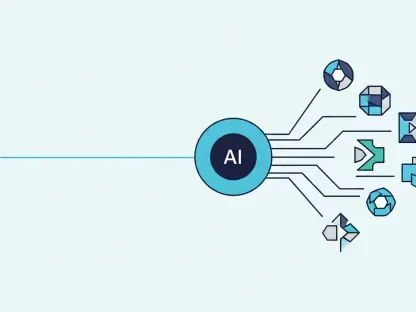The introduction of OpenAI’s GPT-4.1 has catalyzed a significant price war in the AI industry. With superior capabilities and a radically reduced pricing structure, this release forces major players like Anthropic, Google, and xAI to reconsider their positions.
Evolution of AI Pricing Strategies
The AI sector has consistently evolved, transitioning from the early days of expensive, exclusive models to more accessible and affordable solutions. Initially, high costs restricted generative AI models to large enterprises, but OpenAI’s latest innovation, GPT-4.1, continues the trend toward democratizing AI technology. By examining the historical trajectory of AI pricing, it becomes evident that GPT-4.1 stands as a pivotal move potentially altering market dynamics and accessibility.
Key Advantages of GPT-4.1
Elevating Developer Efficiency
GPT-4.1 has outperformed previous versions by achieving a 54.6% win rate on the SWE-bench coding benchmark, notably surpassing Anthropic’s Claude 3.7 Sonnet in practical coding tasks like GitHub pull request evaluations. This performance demonstrates enhanced accuracy and relevance in coding suggestions, addressing critical developer needs and reducing false positives.
Cost Competitiveness and Market Accessibility
OpenAI’s new pricing model, charging $2.00 per million tokens for input and $8.00 per million tokens for output, with substantial discounts for caching, positions GPT-4.1 as an affordable option. This strategy is specifically designed to attract startups and smaller teams, minimizing the financial barriers previously associated with advanced AI adoption.
Shifting Competitive Dynamics
OpenAI’s aggressive pricing strategy exerts significant pressure on competitors. For instance, Anthropic’s higher-priced models will find it challenging to compete with GPT-4.1’s straightforward and affordable pricing. Similarly, Google’s Gemini AI models, with their complex tiered pricing, present financial risks that GPT-4.1 mitigates through transparent and predictable costs.
Broader Market Implications
Reliability and Performance Gaps
While xAI’s Grok series proposes competitive pricing, it fails to deliver on its context window claims. Unlike GPT-4.1’s reliable 1 million token window, the Grok series underachieves at only 131k tokens, emphasizing a significant reliability gap and delineating OpenAI’s superior performance.
Developer-Centric Initiatives
To solidify its market position, OpenAI has introduced initiatives like Windsurf’s unlimited free trial week of GPT-4.1. This approach aims to engage developers deeply with the model’s capabilities, fostering long-term loyalty based on firsthand experience of its benefits and cost-efficiency.
Navigating Market Nuances
Regional and market-specific challenges continue to influence AI adoption, with experts noting the importance of addressing different needs and innovations. These considerations are pivotal for navigating market complexities and leveraging opportunities effectively.
Projections and Industry Forecasts
Emerging trends and potential regulatory changes will likely steer the AI industry further towards cost-effective, accessible solutions. OpenAI’s GPT-4.1, with its balance of affordability and performance, sets a new industry standard that competitors must match. Future AI developments are expected to emphasize transparent pricing, improved performance, and broader accessibility.
Strategic Recommendations
Adopting GPT-4.1’s advanced features and cost-effective structure can significantly enhance business and developer operations. Emphasizing best practices such as iterative coding and efficient prompt reuse can optimize cost savings. This strategic approach empowers professionals to leverage GPT-4.1 for innovation and operational efficiency.
Reflecting on Market Shifts
The launch of GPT-4.1 by OpenAI has reshaped the competitive landscape of AI, setting new benchmarks in affordability and performance. This development has broadened access to advanced AI technologies, driving innovation and prompting competitors to re-evaluate their strategies. The unfolding AI price war hints at a future where cost-efficient and high-performing AI solutions dominate, ultimately benefiting developers and organizations ready to embrace these advancements.









